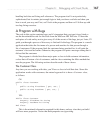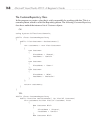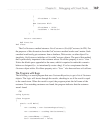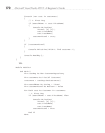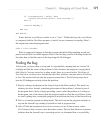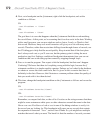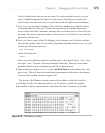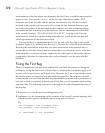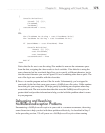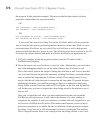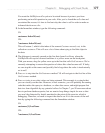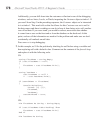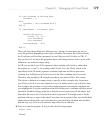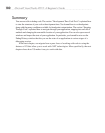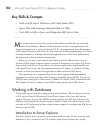
Chapter 6: Debugging with Visual Studio 175
{
Console.WriteLine(
"Found: {0} {1}",
firstName,
lastName);
customerFound = true;
}
VB:
Dim firstName As String = cust.FirstName.Trim()
Dim lastName As String = cust.LastName.Trim()
If (searchName = cust.FirstName) Then
Console.WriteLine(
"Found: {0} {1}",
cust.FirstName,
cust.LastName)
customerFound = True
End If
Next
Notice that the fix was to use the string.Trim method to remove the extraneous space
from the data, assigning the clean results to local variables. Trim defaults to using the
space character but has overloads that allow you to specify a different character
, just in
case the actual character you saw in Figure 6-16 was something other than a space. The
rest of the logic uses variables with the clean data.
3. Press F5 to run the program and see if the fix works. Unfortunately, you’re stopped in
your tracks by the fact that a new error occurs: a NullReferenceException. Unlike runtime
errors that give you wrong data, VS helps greatly by breaking on exceptions when they
occur in the code. The next section describes this error, the NullReferenceException, in
greater detail and provides information to help you deal with the problem when it occurs
in your programs.
Debugging and Resolving
NullReferenceException Problems
Encountering a NullReferenceException in your code is a common occurrence, deserving
some discussion to help you deal with these problems effectively. As described in Step 3
in the preceding section, VS will pause on a NullReferenceException when running



